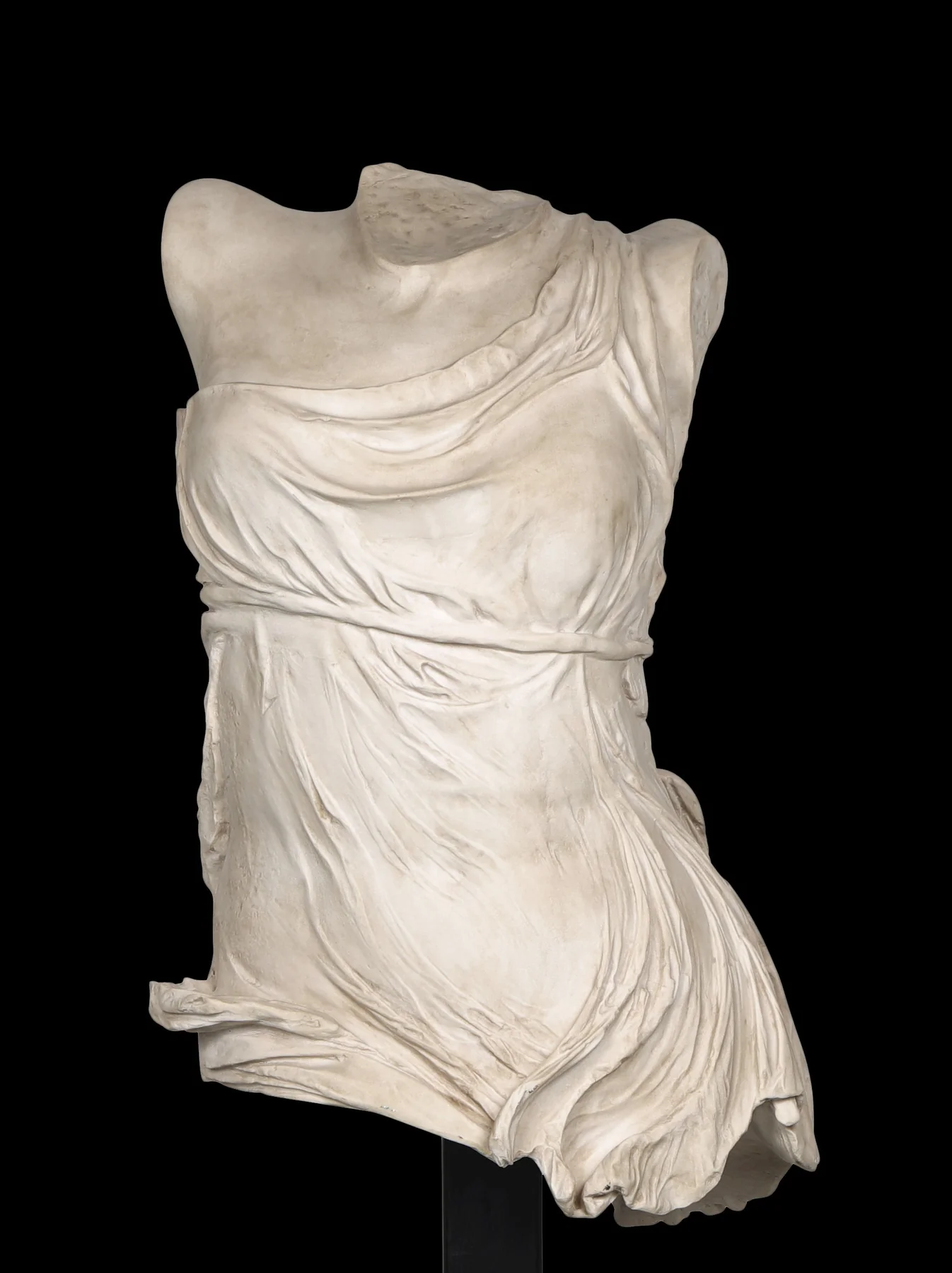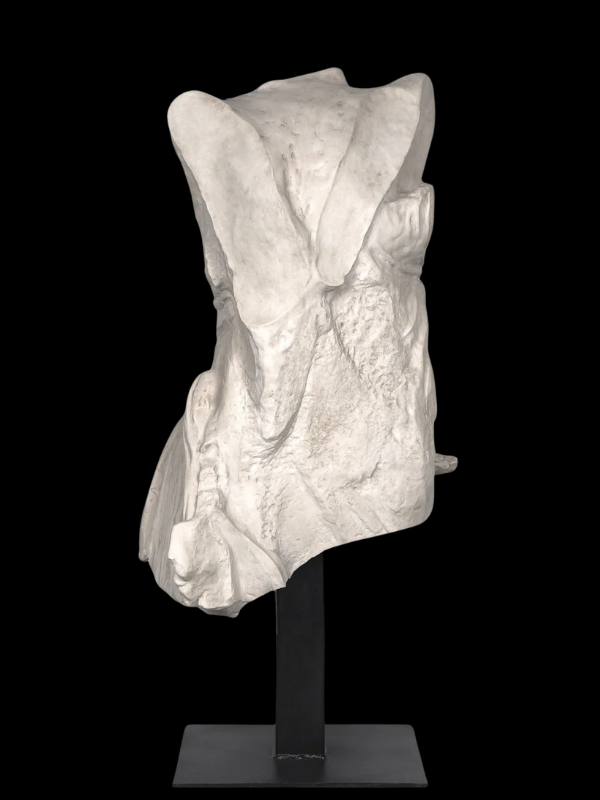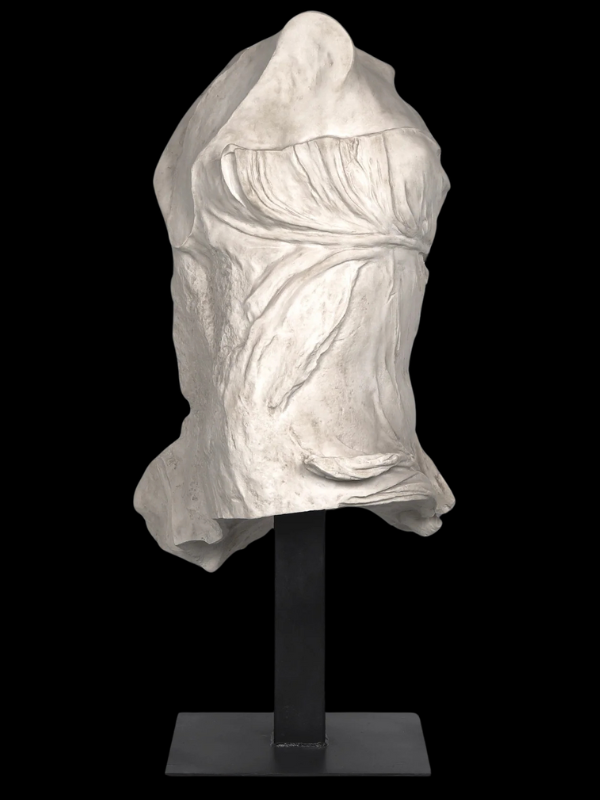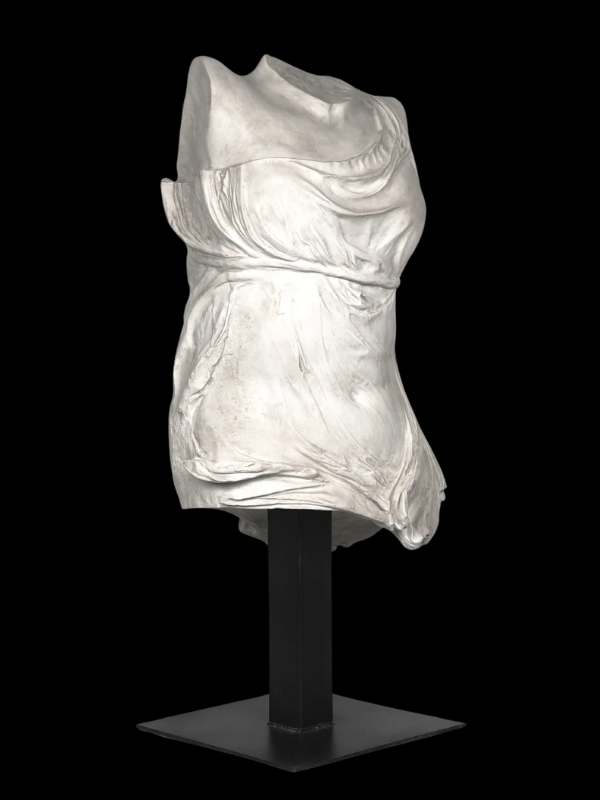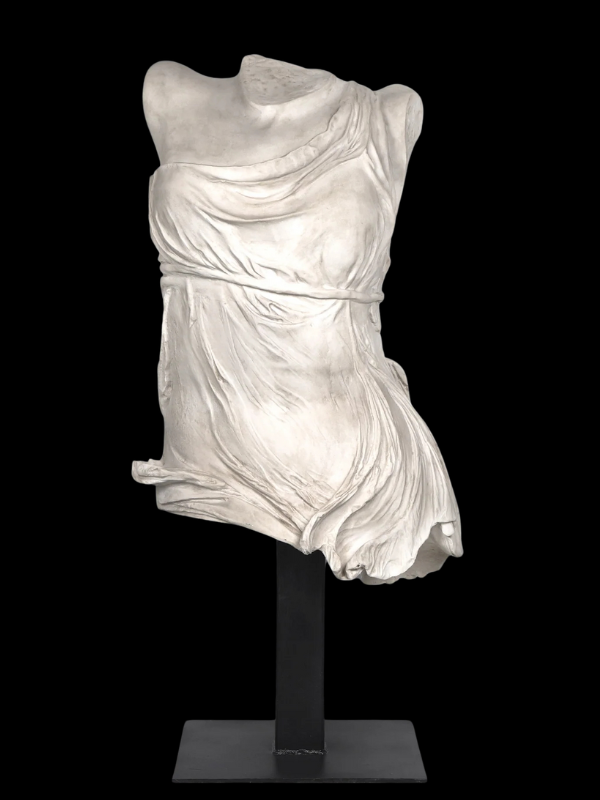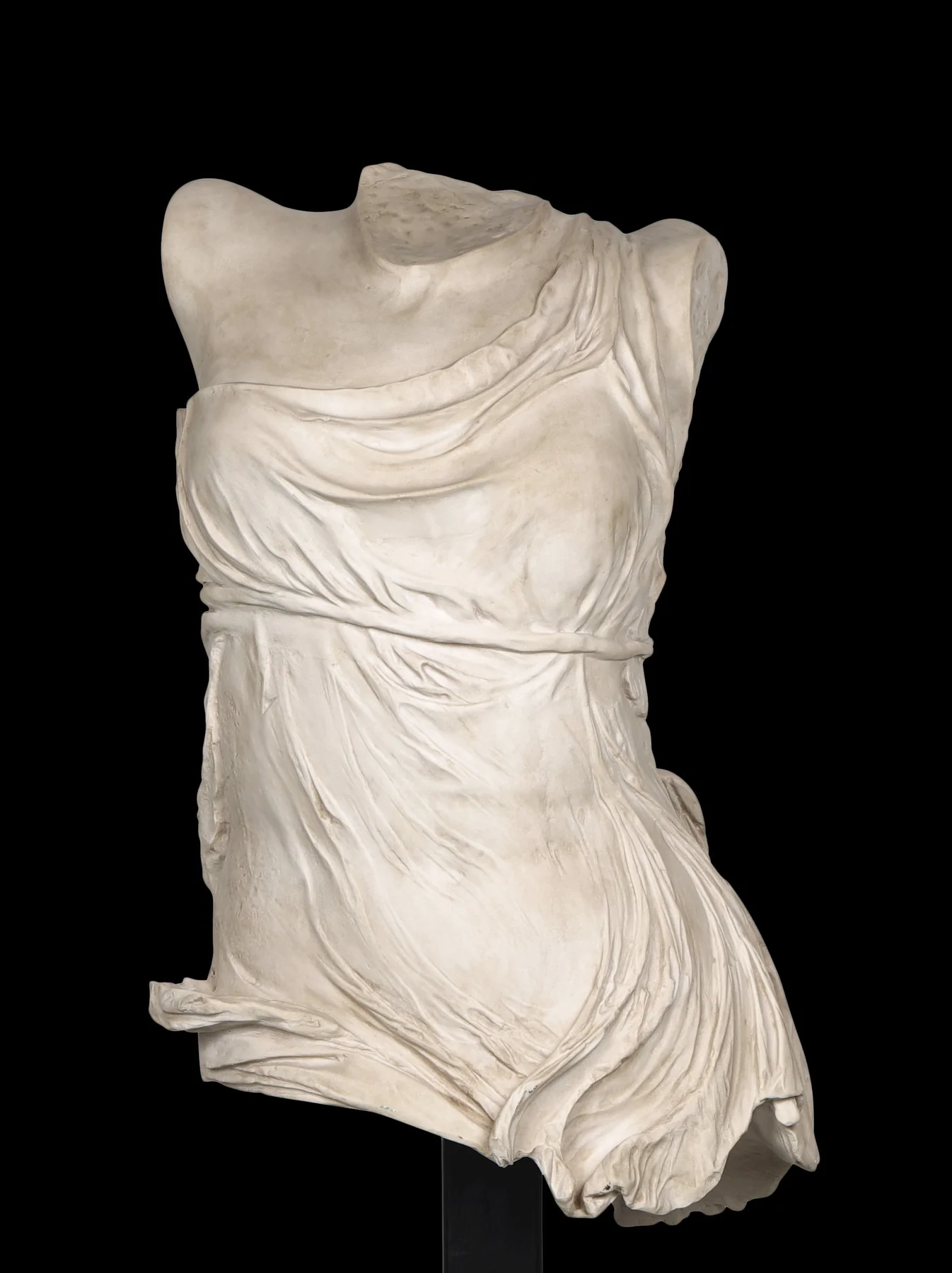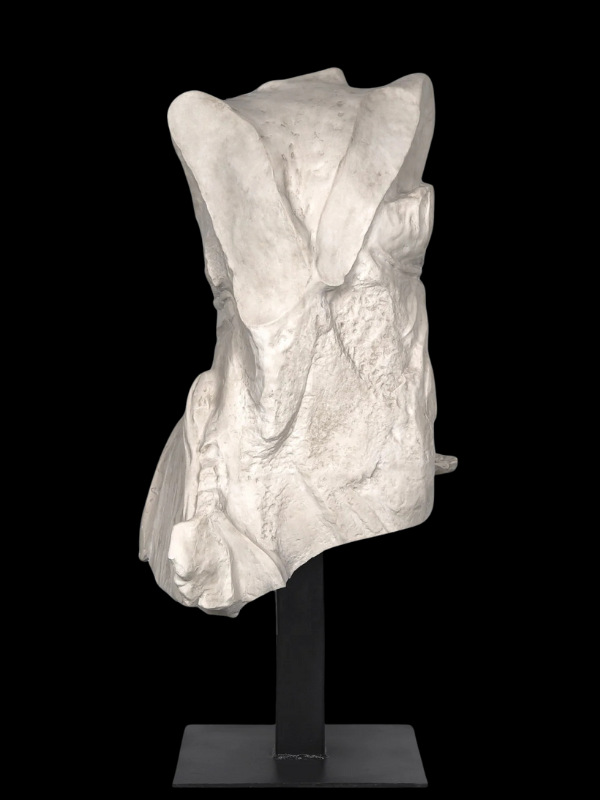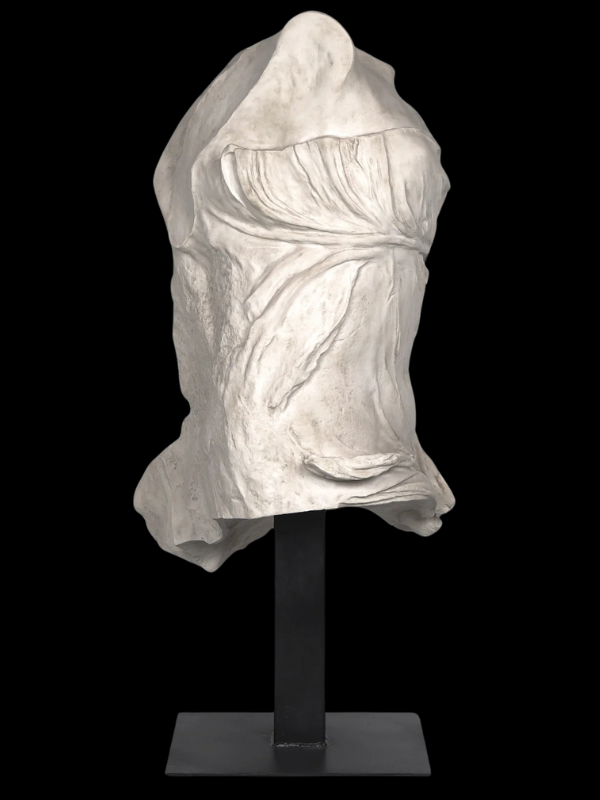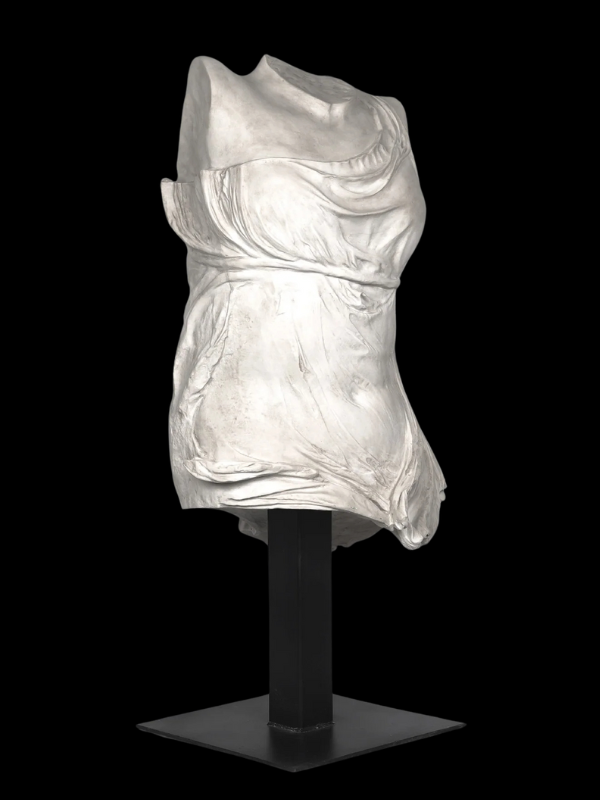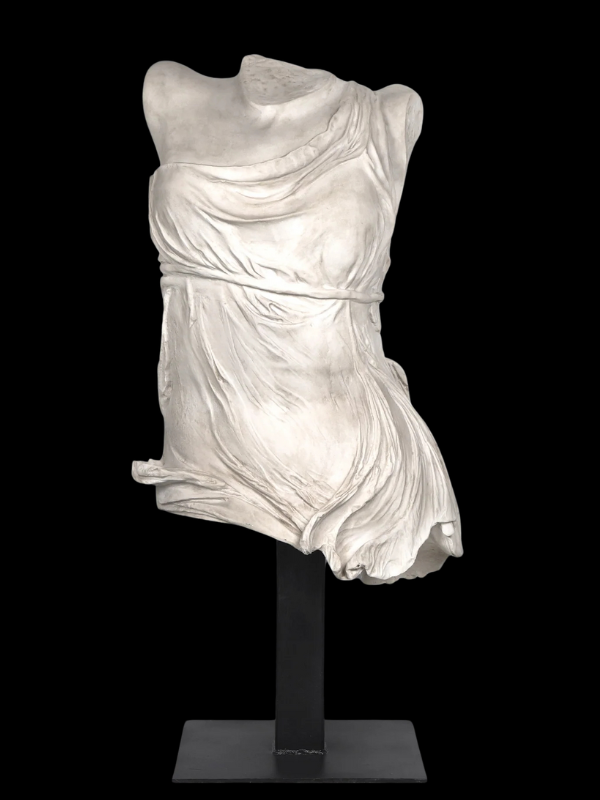Nike Winged Victory of Samothrace Torso Life Size Statue
Nike Winged Victory of Samothrace Torso Life Size Statue
Introducing the Nike Winged Victory of Samothrace Torso Life-size Statue, a remarkable reproduction of one of the most celebrated sculptures in classical art history. This life-size masterpiece is inspired by the Venus Italica by Antonio Canova, sculpted in 1805 and currently housed in the Palatine Gallery in Florence. Known as Venus Italica or Canova’s Venus, this statue captures the essence of grace, beauty, and classical craftsmanship.
Historical Significance of Nike Winged Victory of Samothrace
The Winged Victory of Samothrace is widely regarded as a stunning representation of the goddess Nike, symbolizing victory, particularly in battle. The original statue, a Greek Hellenistic masterpiece from around 190 BC, was discovered on the island of Samothrace and is now a major attraction at the Louvre Museum in Paris. This life-size reproduction captures the dynamic movement, flowing drapery, and emotional intensity of the original, bringing to life the sensation of a divine figure in motion.
While this reproduction is inspired by Canova’s Venus, its form and grandeur are reminiscent of the Nike Winged Victory, particularly in the torso’s elegant curves and detailed rendering.
Dimensions and Materials
This life-size reproduction is expertly crafted to reflect the proportions and details of the original, allowing art enthusiasts to experience the beauty and grace of this classical masterpiece.
- Height: The statue stands at 172 cm (67.1 inches), providing a striking presence that draws the viewer’s attention.
- Width: The torso has a width of 47 cm (18.3 inches), making it a balanced yet substantial piece that fits well in various spaces.
- Depth: The depth of 67 cm (26.1 inches) allows for the detailed folds of the drapery and the flowing lines of the figure to be fully appreciated.
- Weight: At 47 kg (103.4 lbs), this statue is light enough to be easily positioned while retaining the structural integrity and solid feel of a marble piece.
Crafted from natural white marble and architectural resin, this statue has both the aesthetic appeal and durability needed for display in indoor or outdoor settings. The combination of these materials ensures a smooth, polished finish that enhances the intricate detailing and beauty of the sculpture.
Artistic Details and Pose
The Nike Winged Victory of Samothrace is renowned for its dynamic, forward-leaning pose, symbolizing the moment of triumph as Nike descends from the heavens. This reproduction reflects the grace of the original, with the torso suggesting movement, power, and elegance all at once.
-
Graceful Movement: The flowing lines of the torso, the soft curves of the drapery, and the overall composition give the impression of motion, as though Nike is soaring through the air. This sense of movement is enhanced by the detailed folds of the garments, which appear to be caught in a gentle breeze.
-
Winged Torso: Though the wings are absent in this torso reproduction, the form still suggests the figure of a goddess in flight. The sculpted muscles and proportions emphasize both strength and grace, embodying the idealized beauty of classical sculpture.
-
Exquisite Drapery: One of the most captivating aspects of the original statue is the detailed rendering of the drapery, which clings to the figure’s body as though wet, highlighting the form beneath. This reproduction captures that same effect, with the folds of the fabric carefully sculpted to accentuate the torso’s curves and musculature.
Symbolism of Nike and Classical Mythology
As the goddess of victory, Nike played a central role in both Greek and Roman mythology, particularly in the context of war and athletic competitions. Statues of Nike were often erected to commemorate great victories, whether in battle or in sports, and the Winged Victory of Samothrace is one of the most famous examples of this tradition.
-
Victory and Triumph: The pose and form of the Winged Victory symbolize triumph over adversity, making this statue a powerful representation of strength and success. The flowing drapery, which clings to the figure’s body, suggests that she has just descended from the sky, bringing victory to the mortal world.
-
Divine Beauty: In classical mythology, Nike was often depicted as a beautiful, winged woman, and her statues emphasized both her divine grace and her power. The sculptural form of this statue reflects those ideals, with its balance of strength and elegance.
-
Inspiration for Artists: Like the original Winged Victory, Canova’s Venus Italica has served as inspiration for countless artists throughout the centuries. The emphasis on beauty, movement, and balance in these works highlights the lasting influence of classical sculpture on Western art traditions.
Craftsmanship and Reproduction Process
Our Nike Winged Victory of Samothrace Torso Life-size Statue is the result of careful craftsmanship, using the finest materials and techniques to replicate the form and beauty of the original.
-
Natural White Marble: The use of natural white marble gives this statue its smooth, polished finish, ensuring that it retains the same elegance and beauty as the original. The marble’s white color enhances the intricate details of the figure and creates a striking contrast with its surroundings.
-
Architectural Resin: By blending architectural resin with the marble, this reproduction achieves a balance of durability and aesthetic appeal. The resin provides additional strength and flexibility, allowing the statue to be displayed in a variety of settings, including outdoor environments.
-
Attention to Detail: Every aspect of the original statue has been faithfully replicated, from the flowing drapery to the delicate rendering of the torso’s musculature. The result is a statue that feels lifelike, with a sense of movement and grace that captures the spirit of the original.
Versatile Display Options
The Nike Winged Victory of Samothrace Torso Life-size Statue is a versatile piece that can be displayed in a variety of settings, adding a sense of classical beauty and elegance to any space.
-
Indoor Galleries and Homes: This life-size statue makes an impressive addition to any art gallery, museum, or private collection, where it can be appreciated for its classical beauty and historical significance. In a home setting, it becomes a stunning focal point, bringing a sense of sophistication and artistry to living spaces.
-
Outdoor Gardens and Public Spaces: The durability of the materials used in this statue allows it to be displayed in outdoor gardens, courtyards, or public spaces, where it can create a serene and contemplative atmosphere. The flowing lines and graceful pose harmonize beautifully with natural surroundings, making it a perfect addition to outdoor sculptures.
-
Museum Exhibitions: As a reproduction of one of the most iconic sculptures in classical art, this statue is a valuable addition to museum exhibitions, offering visitors a chance to engage with the legacy of ancient Greek and Roman art.
Type: Ancient Greek Decor, Greek Statue, Statue
